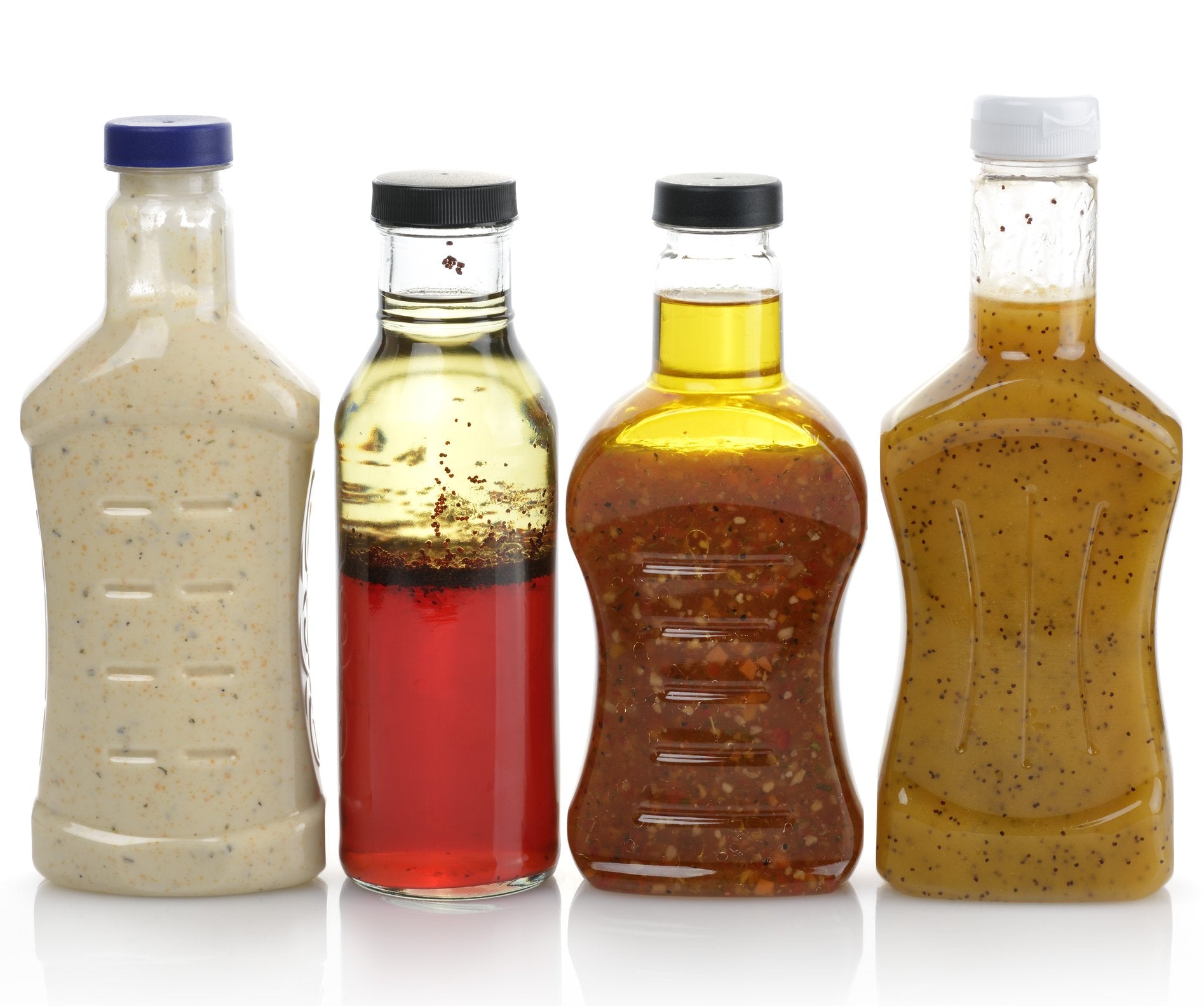Future Trends in Emulsifier In Food Research
Why It Is Necessary to Incorporate an Emulsifier in Food for Optimum Taste and High Quality
Emulsifiers play a crucial role in food production by making certain the secure mixing of immiscible fluids, such as oil and water. They minimize interfacial tension, which avoids the separation of components and adds to a consistent structure. This not just boosts mouthfeel however likewise impacts taste understanding. Understanding the requirement of emulsifiers exposes deeper understandings right into their feature and relevance in cooking applications. What implications does this have for food development and customer preferences?
Understanding Emulsifiers: The Essentials
Emulsifiers play a crucial role in food science, serving as representatives that promote the mixing of 2 immiscible fluids, such as oil and water. These substances possess both hydrophilic (water-attracting) and hydrophobic (water-repelling) properties, which allow them to support solutions. Common emulsifiers include lecithin, found in egg yolks and soybeans, and mono- and diglycerides, derived from fats.
The Science Behind Emulsification
When 2 immiscible liquids are integrated, the procedure of emulsification becomes essential for attaining a stable mixture. Emulsification involves distributing one liquid within an additional, usually oil in water or the other way around. This procedure happens via mechanical frustration, which damages the larger beads right into smaller sized ones, thus raising the surface. Without the existence of emulsifiers, these beads would certainly integrate, leading to separation.
Emulsifiers are particles with hydrophilic (water-attracting) and hydrophobic (water-repelling) residential properties. Their special structure enables them to lower the interfacial stress between the 2 immiscible liquids, maintaining the solution. This stabilization avoids separation and enhances the harmony of texture and flavor. The communications at the molecular level are vital for preserving the integrity of the solution, making certain that food preserve their preferred consistency and preference. Recognizing this scientific research is substantial for food researchers and producers in developing premium food products.
Kinds Of Emulsifiers Utilized in Food
The sorts of emulsifiers made use of in food can be generally classified right into synthetic and all-natural selections. Typical food emulsifiers, such as lecithin and mono- and diglycerides, play a crucial role in boosting food security and texture. Understanding these differences is crucial for appreciating just how emulsifiers add to the overall high quality of food.
Artificial vs. all-natural Emulsifiers
While both natural and artificial emulsifiers offer the necessary function of supporting mixtures in food, their qualities and beginnings differ substantially. All-natural emulsifiers, stemmed from plant or pet sources, consist of lecithin, casein, and certain gum tissues. They are frequently regarded as healthier options, attracting customers looking for clean-label items. In comparison, synthetic emulsifiers, such as mono- and diglycerides, are chemically engineered and may use boosted security and capability in a larger variety of applications. These artificial choices can be more cost-effective and offer regular top quality. Nonetheless, they may evoke skepticism amongst health-conscious consumers. Ultimately, the choice in between all-natural and synthetic emulsifiers depends on the wanted high qualities of the foodstuff, including appearance, taste, and shelf-life security.
Usual Food Emulsifiers
Emulsifiers play a necessary role in the food market, guaranteeing the stability and structure of different items. Usual food emulsifiers include lecithin, mono- and diglycerides, and polysorbates. Emulsifier In Food. Lecithin, stemmed from resources like soybeans and egg yolks, is extensively utilized in baked goods and delicious chocolates. Mono- and diglycerides, usually obtained from vegetable oils, improve the creaminess of margarine and ice cream. Polysorbates, synthetic emulsifiers, are regularly discovered in salad dressings and sauces, promoting a smooth uniformity. Various other emulsifiers such as xanthan gum and guar gum tissue, both natural thickeners, also contribute to the preferred appearance in numerous food products. Each emulsifier kind offers certain functions, adding to the total high quality and charm of food things

Role in Food Stability
Food stability is significantly affected by the sorts of emulsifiers used, which assist protect against the splitting up of components in various formulations. Emulsifiers such as lecithin, mono- and diglycerides, and polysorbates play vital duties in preserving the uniformity of products like dressings, sauces, and gelato. Lecithin, acquired from soy or egg yolk, is specifically effective because of its natural residential properties, while mono- and diglycerides improve texture and rack life. Polysorbates, on the other hand, enhance the security of oil-in-water emulsions, making them excellent for baked products. The option of emulsifier depends upon the specific food application and desired features, making sure that products remain steady, attractive, and of top quality throughout their designated life span.
Exactly How Emulsifiers Improve Appearance and Mouthfeel
Enhancing the sensory experience of food, emulsifiers play an essential role in enhancing structure and mouthfeel. These materials facilitate the consistent distribution of active ingredients, enabling a smoother and creamier consistency in items such as dressings, sauces, and ice lotions. By supporting combinations of oil and water, emulsifiers protect against splitting up, causing a natural structure that improves the general consuming experience.
Furthermore, emulsifiers can change the thickness of foodstuff, adding to a desirable thickness or creaminess. This change of structure can affect how food really feels in the mouth, affecting complete satisfaction and pleasure. Additionally, by developing a stable emulsion, emulsifiers help maintain the stability of the product, making sure that the designated mouthfeel is continually supplied gradually. Overall, the application of emulsifiers is important for accomplishing the ideal appearance and mouthfeel, inevitably boosting the high quality of food items.
The Function of Emulsifiers in Taste Improvement
Flavor enhancement in cooking applications usually rests on the reliable use of emulsifiers. These compounds promote the blending of water and More Bonuses oil, permitting the even circulation of flavor substances within food products. By developing steady solutions, emulsifiers help to envelop and release unstable flavors, improving the total sensory experience.
In addition, emulsifiers can enhance the understanding of preference by influencing the mouthfeel and structure of meals. A smoother, much more natural product can bring about a heightened perception of tastes, making them more noticable and enjoyable. Emulsifiers can shield sensitive flavors from deterioration, making certain that they continue to be intact throughout processing and storage.
Emulsifiers in Popular Food Products
Just how do emulsifiers contribute to the appearance and security of prominent food? Emulsifiers play a necessary role in numerous extensively taken in items. In salad dressings, they ensure a smooth mix of oil and vinegar, preventing splitting up and enhancing mouthfeel. In gelato, emulsifiers develop a creamy texture by supporting air bubbles, resulting in a rich and indulgent item. Baked products, such as bread and cakes, gain from emulsifiers by enhancing volume and crumb structure, resulting in a lighter and more attractive structure. In addition, mayo relies on emulsifiers to keep its thick consistency and avoid oil splitting up. Margarine and spreads additionally use emulsifiers to achieve a spreadable structure while preserving stability. These instances highlight the considerable influence of emulsifiers on the high quality and enjoyment of everyday food, emphasizing their value in contemporary food formula.
The Future of Emulsifiers in Food Advancement
The future of emulsifiers in food technology is noted by considerable developments in modern technology, leading the way for brand-new solutions. Additionally, the demand for healthier emulsifier alternatives is climbing, motivating scientists to explore plant-based and all-natural choices. Lasting sourcing methods are also coming to be essential, as consumers progressively focus on ecological responsibility in their food choices.
Innovations in Emulsifier Innovation
As scientists proceed to discover the molecular ins and outs of emulsifiers, substantial improvements are arising that pledge to change food advancement. Current developments concentrate on producing extra functional and efficient emulsifiers that improve texture, stability, and taste in various food items. Innovations in biopolymer-based emulsifiers are obtaining traction, supplying enhanced sustainability and efficiency over conventional choices. Furthermore, innovations in nanotechnology are making it possible for the design of emulsifiers at the molecular level, which can bring about finer solutions and improved sensory experiences. These technical developments are not only improving item quality but also broadening the variety of applications for emulsifiers in the food sector. As these innovations unfold, they are anticipated to redefine cooking opportunities and consumer choices in the future.
Healthier Emulsifier Alternatives
While typical emulsifiers have played an important role in food production, there is a growing demand for healthier choices that straighten with customer choices for all-natural active ingredients and clean tags. Advancements in plant-based emulsifiers, such as those stemmed view publisher site from flaxseed, sunflower, and soy, have actually gained popularity great post to read because of their regarded health benefits. These options frequently include fewer additives and offer performance similar to artificial emulsifiers. Additionally, active ingredients like aquafaba, the liquid from cooked chickpeas, have become functional emulsifying agents, appealing to vegan and health-conscious consumers. Emulsifier In Food. The change in the direction of these healthier emulsifiers not only improves the charm of food items but additionally sustains the trend of openness in ingredient sourcing, eventually fostering customer depend on and satisfaction

Lasting Sourcing Practices
Lasting sourcing techniques are coming to be significantly important in the growth of emulsifiers, showing a more comprehensive dedication to environmental duty within the food industry. Makers are now prioritizing using eco-friendly resources, such as plant-based active ingredients, which reduces the carbon footprint connected with traditional emulsifiers. This shift not only supports biodiversity yet also advertises honest farming methods that profit regional communities. Additionally, innovations in modern technology enable the removal and processing of emulsifiers with reduced environmental influence. By adopting sustainable sourcing, firms improve their brand picture while fulfilling consumer demand for openness and eco-friendliness. As the food market continues to develop, the assimilation of sustainable emulsifiers will certainly play a crucial duty in shaping future innovations, making certain an equilibrium between quality and ecological stewardship.
Frequently Asked Inquiries
Are Emulsifiers Safe for People With Food Allergies?

Can Emulsifiers Impact the Nutritional Value of Food?
Emulsifiers can affect the nutritional worth of food by improving nutrient absorption or possibly changing the bioavailability of particular substances. Nevertheless, their results vary extensively depending upon the sort of emulsifier and the overall food formulation.
How Do Emulsifiers Influence Service Life of Products?
Emulsifiers improve the service life of products by maintaining blends, protecting against separation, and minimizing wasting. This stability assists keep appearance and taste gradually, ultimately guaranteeing food remains enticing and secure for longer periods.
What Are Common All-natural Emulsifiers Found in Home Kitchens?
Common natural emulsifiers located in home cooking areas consist of egg yolks, honey, soy, and mustard lecithin. These active ingredients help stabilize mixtures by decreasing surface area stress in between oil and water, boosting appearance and uniformity in different dishes.
Are There Any Kind Of Interest In Artificial Emulsifiers in Food?
Issues regarding artificial emulsifiers in food include prospective digestive problems, inflammatory responses, and links to excessive weight. Some researches suggest these ingredients may interrupt intestine microbiota, increasing concerns regarding their long-lasting impacts on health and wellness and well-being.
Common food emulsifiers, such as lecithin and mono- and diglycerides, play a vital duty in enhancing food stability and texture. Emulsifiers play a vital role in the food industry, guaranteeing the stability and appearance of different products - Emulsifier In Food. Various other emulsifiers such as xanthan gum tissue and guar gum tissue, both natural thickeners, also add to the preferred appearance in different food products. Recent advancements focus on producing much more functional and effective emulsifiers that boost texture, stability, and flavor in different food items. Emulsifiers can pose threats for people with food allergies, as some emulsifiers are acquired from allergens like soy or eggs